Some people say that you can’t build a device, test it, and give a formal presentation on it all in less than 48 hours. I say that’s a normal week as a SEED intern.
To start off this fast-paced week, we held a competition workshop about rapid prototyping. The task: build a bajaj (also known as a rickshaw) to fly down a wire from the upstairs OEDK to the basement without losing any passengers (ping-pong balls). This workshop taught us to plan quickly and work carefully, and it was also fun and satisfying to see our vehicles not completely break. I teamed up with Charity to build the playdoh bajaj pictured below, and although we did not have the fastest time, our bajaj soared with ease.
By the way, the fastest time was from our TA Jeremy at a solid 4.13 seconds. Though he probably cheated by lubricating the zip line with chapstick ….
After this workshop, we dove right into our project for the Okapi at the Houston Zoo. Our goal was to design an enrichment device that would intellectually stimulate and entertain the Okapi. Me and my other team members (Bruno, Manuel, and Tiwonge) decided upon a modified tether-ball game for the Okapi. We made a wooden plank with two laser-cut tracks for the ball to move about. The ball itself was 3D-printed and had holes all about the surface for the Okapi to stick its tongue inside and grab food. For added stimulation, we constructed a vibration device to be placed inside the ball. This would cause a small vibration when the Okapi touched it with its tongue. For one day of prototyping and limited materials available, I’d say it was a success.
On Tuesday afternoon, we put the finishing touches on our design and presented the medium-fidelity prototype to the other interns. After five days of screening and scoring matrices, stacks of brainstormed ideas, instructional videos on 2x speed, and some laser-cutting failures, we officially finished the OEDK 2017 Engineering Design Bootcamp.
With the Okapi devices behind us, we were all eager to hear about the projects we would be undertaking for the remainder of the internship. All the projects are actually previous ENGI 120/200 projects that need refinement before delivering to the client. I was excited to learn that I was placed on my first choice team for the DYEL Wheelchair. My team was tasked by Shriner’s Hospital to design a transfer device for a person in a wheelchair to an elevated position, such as an SUV or truck.
In addition to the previous team’s documents, we have done some further research into other handicap transfer devices and general lifting machines. Today we have plans to meet with our client for feedback on the current prototype and instruction about future steps to take. While I have worked with both children and adults with disabilities before, I have mainly dealt with intellectual disabilities. Since this project is based around a physical disability it presents a brand new challenge for me.
More importantly, I hope this project will have a positive impact on the lives of people with wheelchairs and will increase awareness and empathy for those with disabilities.
My favorite part of this week, however, was not brainstorming new ideas for our project. Rather, it was a workshop we participated in yesterday called “Needs Finding”. In most engineering design courses at Rice, we focus on completing projects for a community or specific client. We rarely dive into what motivated the problem to arise in the first place. In order for a project to be brought to the OEDK, someone had to have noticed a need that was not met first.
Dr. Ghosin from Rice’s Bioengineering Department led this informative and intriguing workshop. He focused on physical disabilities and created various scenarios for us to gain empathy for those who live with such difficulties on a daily basis. One scenario involved eating cereal with our arms/wrists bandaged to mimic a disorder called Arthrogryposis. Another scenario involved being blindfolded and navigating the dangerous minefield of rolling chairs in the OEDK basement. The last scenario, of particular interest to me, was navigating the OEDK in a wheelchair.
We were given extremely basic wheelchairs fit for a large male patient over 6 feet. Obviously, sitting at exactly 5 feet, it was a bit difficult for me to navigate. But the challenge did help me gain a better understanding of the difficulties wheelchair occupants face. 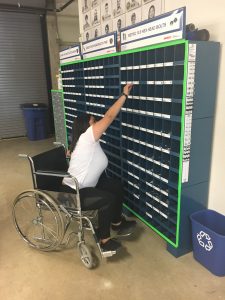
Looking back on this week, it’s surprising to see that we had so many more activities than our first week. It was a roller coaster of rushed prototyping and long conversations, and the few events mentioned here barely scrape the surface. But every moment was enjoyable and definitely memorable.

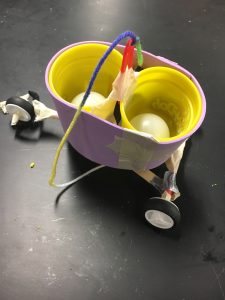
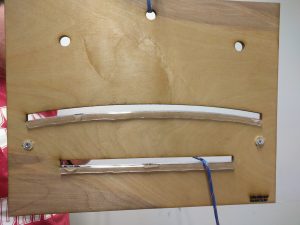
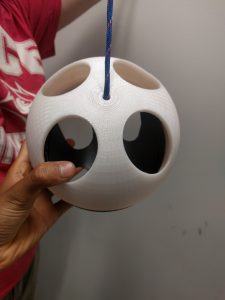
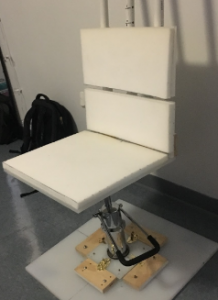
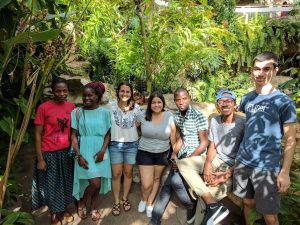
So proud of you